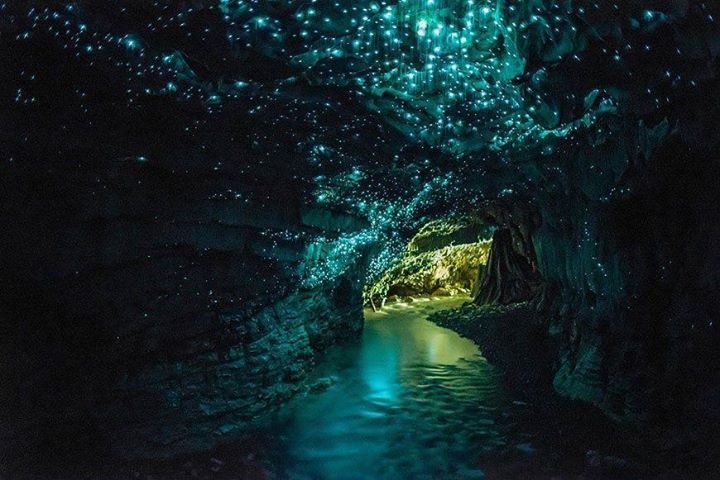Glowclings
These bioluminescent creatures are found in The Burrows. Their name may come from a very literal description of a glowing creature which clings to ceiling and walls, or it may be a linguistic inversion of darklings.
The glowclings feed on the other insects in the Burrows, mostly flies, midges, and the occasional spider preying on the flies and midges. Glowclings secrete a sticky substance on thin filaments which spread across the mat of cave moss or dangle from ceiling or wall. Substances left on this web, and the glowcling itself, shed a pale blue-green light, which in the deep blackness of the cave network appears like a more strongly hued spray of stars in the night sky. Like the stars, the glowclings do not offer enough light to illuminate, but objects or persons may be perceived by their silhouettes against the field of lights.
The cave moss, in turn, has adapted to use this faint light as if it were a mild sun, and it thrives in the caves. Though there is little running water in the caves, there are a few underground rivers and infrequent runoff from surface rains, and the air remains humid enough to support both cave moss and insect life.
Glowclings will also feed on any other meat or protein left within their caves. A corpse, perhaps of a dead Baskings or a lost Rideis, will be covered in glowclings anxious for both its decomposing meat and the insects it attracts. Their webs set to trap other feeders will cover the dead body in a constellation of beautiful light.
Basic Information
Genetics and Reproduction
Glowclings remain in this form for approximately a year, according to best available naturalist knowledge. They then wrap themselves in filament similar to their predatory webs, though less sticky and without any bioluminescence, for a fortnight. At this point they emerge as glistenwings, and they migrate to the surface to seek a mate. It is believed that they will mate equally readily with a glistenwing from their own tunnel, from another tunnel, or with a grasslands glistenwing. This has led to a debate on whether glowclings are truly a separate species from the surface glistenwings, which have a similar life cycle without the bioluminescence. Perhaps it is the dark which prompts the young glowcling to manufacture light?
Regardless of choice in reproductive partner, the glistenwing will return to its own tunnel to lay its eggs for the next generation, and then die. Dead glistenwings can be found on tunnel floors.
Additional Information
Uses, Products & Exploitation
Dead glistenwings are often harvested for their wings, which can be used for decor, frequently sewn to clothing to add pearlescent glamour. Noble and royal persons, or Virilo, may be seen in glistenwing garments.
Perception and Sensory Capabilities
Glowclings sense their prey's capture by the vibrations in their sticky glowing web. They then move to the newly trapped insect and consume web and prey together.
Lifespan
1 year
Average Weight
half a fingernail
Average Length
1/4 to 1/2 inch
Geographic Distribution





Comments